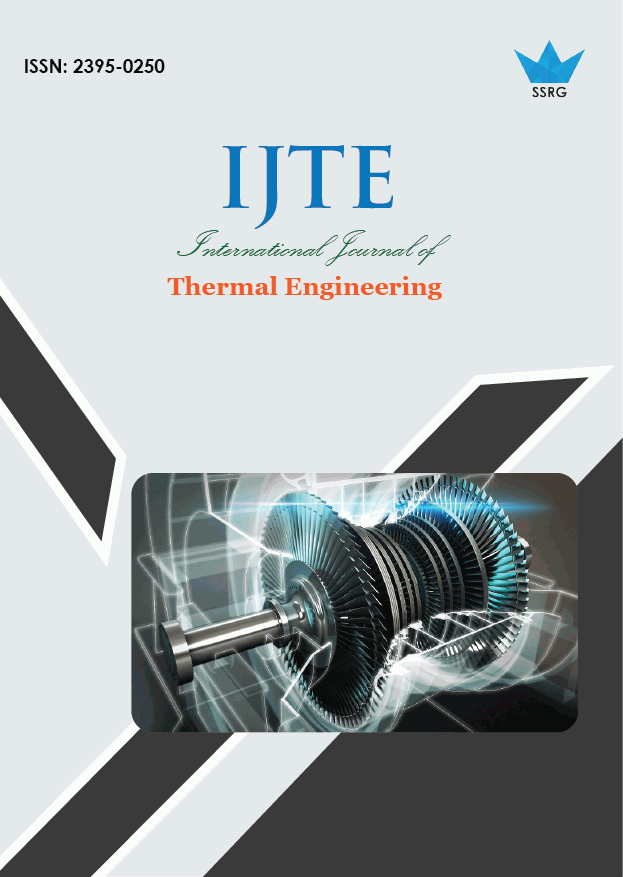Assess the Potential Contribution of Municipal Solid Waste Power Generation Facilities in Libya

| International Journal of Thermal Engineering |
| © 2021 by SSRG - IJTE Journal |
| Volume 7 Issue 1 |
| Year of Publication : 2021 |
| Authors : Monaem Elmnifi, Osama D.H abdulrazig, Hadir Gawili, A.M. Elbreki, Nouriyah Faraj |
How to Cite?
Monaem Elmnifi, Osama D.H abdulrazig, Hadir Gawili, A.M. Elbreki, Nouriyah Faraj, "Assess the Potential Contribution of Municipal Solid Waste Power Generation Facilities in Libya," SSRG International Journal of Thermal Engineering, vol. 7, no. 1, pp. 1-4, 2021. Crossref, https://doi.org/10.14445/23950250/IJTE-V7I1P101
Abstract:
The generation of municipal solid waste (MSW) has lately increased as a result of population rapid growth in Libya. However, according to some reported issues, the country's electricity demand and the problem of waste in Libya lies in the lack of good waste management is an important dilemma that needs to solve. As the disposal of all types of waste goes in open dumps, and that negatively affects the environment and increases greenhouse gases. This study gives a brief proposal to use renewable energy, which contains waste-to-energy (WTE) facilities. This paper evaluates the potential contribution of WTE facilities to total maximum energy demand in Libya up to 2030 based on two scenarios: mass incineration and mass incineration with recycling in the whole country of Libya and not just the cities. The analysis shows that a potential of about 197 MW based on the mass combustion scenario and about 57 MW based on the mass incineration scenario with recycling. Moreover, these values are around 0.82% and 0.24% of the expected 2030 peak electricity demand of 24.1 GW. The projected results for each city of the two scenarios can use to design the future WTE facilities in major cities in Libya. Further investigations recommended assessing the two scenarios based on financial, social, technical, and environmental criteria.
Keywords:
Municipal solid waste, Incineration, Libya, electricity demand, waste to energy
References:
[1] Elmnifi, Alshilmany.M, Abdraba.M., Potential of Municipal Solid Waste in Libya For Energy Utilization, Open Journal of Mechanical Engineering (OJME) 2(2)(2018) 01-05
[2] Elmnifi, M., M. Alshelmany, M. Alhammaly, and O. Imrayed: Energy recovery from municipal solid waste incineration Benghazi – Case Study. Eng. Herit. J., 2, 19-23(2018) Mechanica Malaysia, 2(1)(2019) 11-15.
[3] Elmnifi, M., Amhamed, M., Abdelwanis, N., & Imrayed, O. (2018). WASTE-TO-ENERGY POTENTIAL IN TRIPOLI CITY-LIBYA. Environmental Engineering Science, 2, 01-03.
[4] Statistical book 2012.bureau of statistics and census annual bulletin, state of Libya.
[5] Jalal E. Municipal solid waste management and institutions in Tripoli, Libya: applying the Environmentally Sound Technologies (ESTs) concept [master thesis] the University of Hull, (2013).
[6] Elmnifi, M., Moria, H., Emhamed, A., Alsaker, M., & Amhamed, M., Economic and Environmental Value for Electrical and Electronic Waste Recycling in North African Countries. International Journal of Engineering Research & Technology (IJERT), 8(8)(2019) 207-211. ..
[7] Elmnifi, M., Abdelwanis, N., & Imrayed, O., Burning Municipal Solid Waste to Generate Electric Power, a Study in Al-Marj, Libya. Global Journal of Research In Engineering.
[8] Sawalem, M., Selic, E. & Herbell, J., Hospital waste management in Libya: A case study, Waste Management, vol. 29(4)(2009) 1370-1375.
[9] ASME. American Society of Mechanical Engineers. Waste-to-energy: a renewable energy source from municipal solid wastes. White paper submitted to the Congress; (2008).
[10] Young GC. Municipal solid waste to energy conversion processes: economic, technical, and renewable comparisons. 1st ed. Hoboken, New Jersey: John Wiley; (2010).
[11] Psomopoulos CS, Bourka A, Themelis NJ. Waste-to-energy: a review of the status and benefits in USA. Waste Manage (2009) 29:1718–24.
[12] Omar. K., Huseyin M. Cekirge b, Syed. A, An assessment of the potential contribution from waste-to-energy facilities to electricity demand in Saudi Arabia, (2013) Elsevier Ltd. 2013.06.056
[13] Elmnifi, M., Alshelmany, M., ALhammaly, M., Imrayed, O., & Arslan, C., Energy recovery from municipal solid waste incineration Benghazi-Case Study. Engineering Heritage Journal (GWK), 2(1)(2018) 19-23.
[14] Elsaket G. Simulating the integrated solar combined cycle for power plants application in Libya[Master thesis].School of Engineering, Cranfield University;(2007).
[15] Gilbert MM, Wendell PE. Introduction to environmental engineering and science, Chapter 9. Solid waste management and resource recovery. Pearson Education Inc.; (2008). ISBN-13: 978-0-13-233934-6.
[16] Electricity for Europe (Eurelectric). Efficiency in Electricity Generation. <http:// www.eurelectric.
[17] Psomopoulos CS, Bourka A, Themelis NJ. Waste-to-energy: a review of the status and benefits in USA. Waste Manage (2009) 29:1718–24.
[18] Moria, H., & Elmnifi, M. Feasibility Study into Possibility Potentials and Challenges of Renewable Energy in Libya. International Journal of Engineering Research & Technology (IJERT)
[19] Elmnifi, M., Alshilmany, M., & Abdraba, M., Potential of Municipal Solid Waste in Libya For Energy Utilization. Globe, 11(13)(2019).

 10.14445/23950250/IJTE-V7I1P101
10.14445/23950250/IJTE-V7I1P101